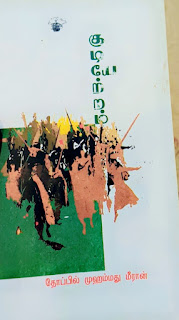Bloodbath of Marakayars
The novel, Kudiyettram, is a gripping tale of rebellion, survival, and hope. It’s set during the 16th and 17th centuries, when the Marakayar , Tamil-speaking merchants were navigating the tricky tides of British exploitation. The British, greedy for control, imposed taxes on exports and imports. But one man, Periya Thambi Marakayar, stood tall against their tyranny. His rebellion wasn’t just bold , it was legendary.
However, heroism often comes at a cost. Periya Thambi Marakayar discovered the British plot to kill him, yet he chose to fight. He gave his life for his cause, leaving his brother, Chinna Thambi Marakayar, to continue the struggle. Despite his courage, the weight of oppression crushed their lineage, and their community was pushed into despair, settling in what later became Oodaikaara Street , a slum area rife with discrimination.
Here’s where the story gets raw. They weren’t just marginalized; they were denied basic rights like a masjid or a graveyard. Renting burial space? Imagine the indignity! Amidst this bleak backdrop emerges Sanduk Moiudheen, a character who washes dead bodies for a living. The community restricted him to this role, but he dared to dream beyond the norms. He took up fishing, symbolizing a break from societal chains.
What makes Kudiyettram so powerful is its portrayal of extremes oppression vs. resistance, despair vs. hope. It shines a light on taboos, the struggles of women, and the unrelenting fight for dignity. And yet, it’s not all doom and gloom. Through every dark turn, the novel leaves readers with a glimmer of hope, a belief in better days.
Hearing this story reminded me of the resilience and grit often hidden in forgotten corners of history. If you ever get a chance to read Kudiyettram (or hear about it like I did), trust me it’ll leave you speechless. It’s a reminder that even in the harshest storms, there’s always a chance to rise again.


Comments
Post a Comment